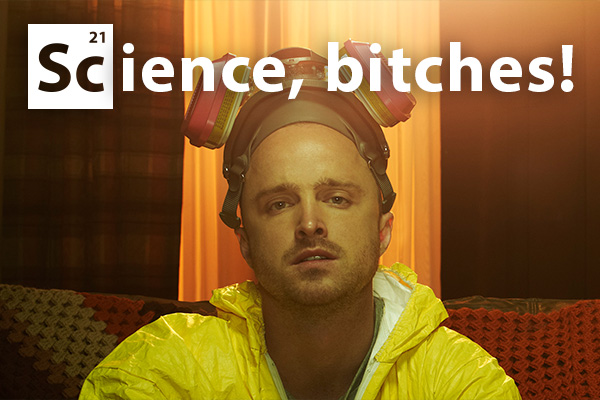Science, Bitches! | Issue 26
Can You Trust Your Own Memory?
The breakthrough was made possible by an awesome technique called optogenetics. Optogenetics involves inserting the gene for a light-sensitive protein into specific neurons in the mouse’s brain, allowing you to use different types of light to activate certain types of brain cells.
This sounds crazy, I know. How can light turn on brain cells? What scientists do is put a special protein – a channelrhopsin – on the surface of the brain cells they want to activate. This protein responds to light, causing the brain cells to fire electrical charges and thus communicate with one another. Consequently, scientists are able to make a mouse remember whatever it is that those brain cells normally remember, on cue!
One group introduced a special gene into the brain of a mouse that is only turned on when a certain brain cell is active. When this special gene is activated, it switches on the gene for channelrhodopsin. This means if this brain cell is active, the mouse will produce channelrhodopsins, ultimately resulting in a brain cell that can be turned on with a flick of the switch.
But wait – if turning on a brain cell makes the cell produce the channelrhodopsin protein, wouldn’t this process happen in all cells, all the time? Clearly, there’s one more piece of the puzzle to explore. Scientists made sure that brain cells could only make the channelrhodopsin when the mouse was not being fed a particular drug. When the mouse is taken off the drug, all the brain cells that turn on normally are labelled with the channelrhodopsin, allowing scientists to turn them on at will!
This is how it works: firstly, the scientists took the mouse off the drug. They then put the mouse into a brand new, never-before-seen environment. Consequently, every brain cell that was switched on when in this particular environment (and is thus responsible for remembering this particular environment) was labelled with channelrhodopsin. The scientists then put the mouse back on the drug, ensuring that no more brain cells were activated.
Once this was accomplished, the (poor) mouse was administered a small electric shock at the same time as the required wavelength of light was fired, forcing the mouse to associate its memory of that particular environment with the sensation of being shocked.
Typically, when a mouse is shocked it will freeze like a deer in the headlights. Scientists use this to test memory all the time. The idea is that when a mouse is returned to the environment it associates with the shock experience, it will freeze in anticipation. Not this time, however.
This time, the scientists put the mouse into the first environment – the one in which they labelled the brain cells involved in remembering being there. And, just as it would when put in the “shock box,” the mouse froze, despite never having being shocked in that environment.
The scientists, in other words, had succeeded in creating a false memory. By activating the brain cells involved in remembering that new environment, turning on the light and giving the mouse a shock, all at the same time, these memories “overlapped,” resulting in the mouse associating the new environment with the memory of the shock. Crazy!
Ok, so it’s not quite like implanting the memory of reading your textbook into your brain before your final exam. But it’s amazing to see what we can do with science, bitches!



